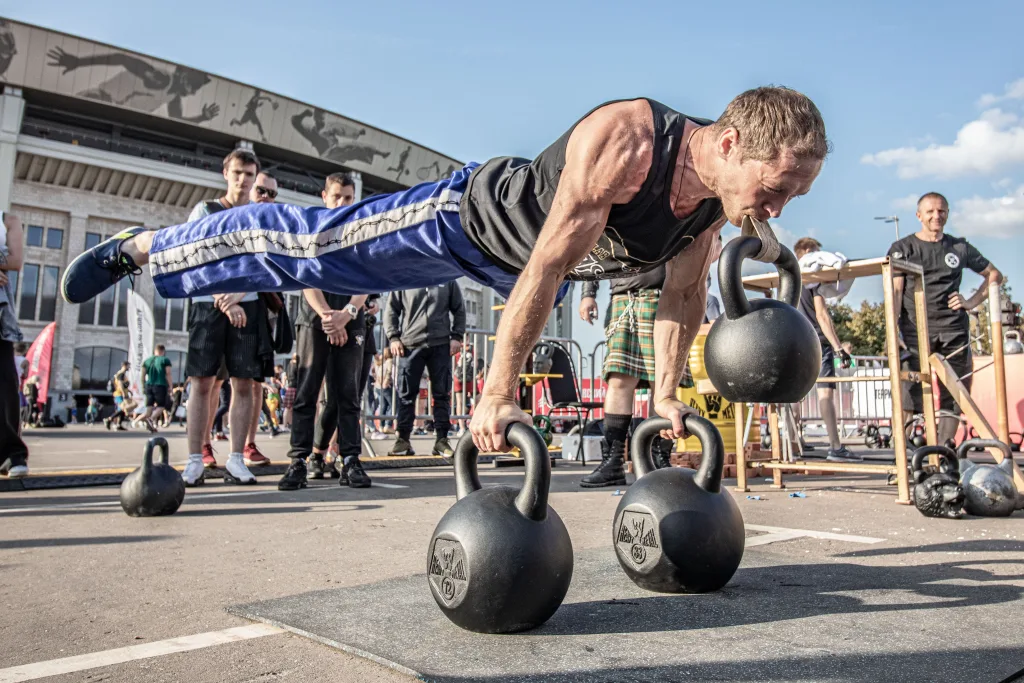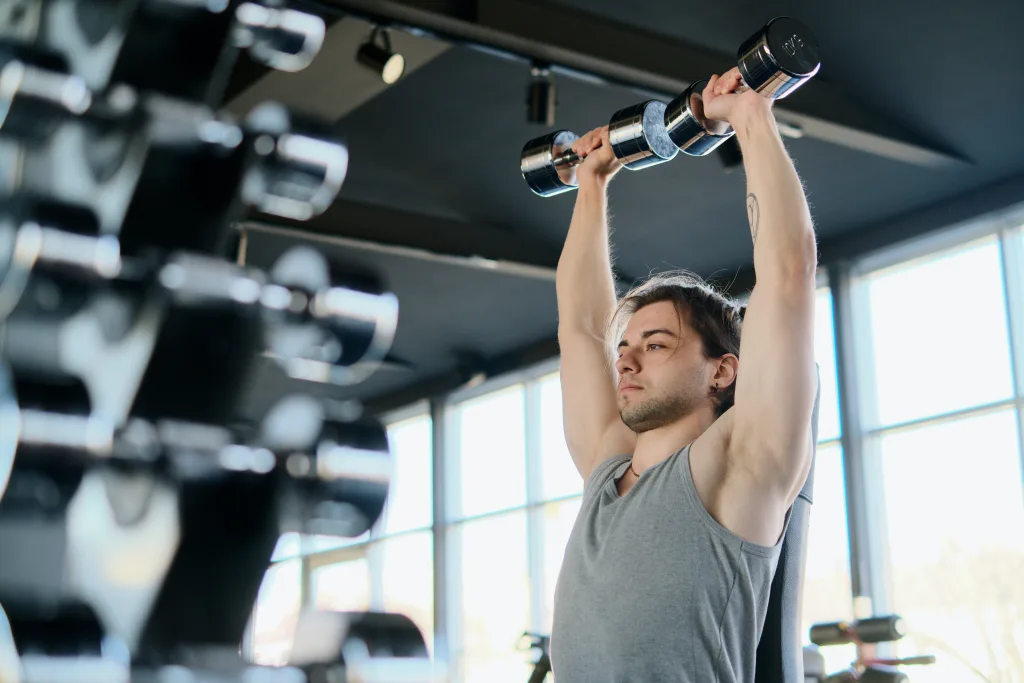Inactivity among men is a growing concern in our society. Sedentary lifestyles have become the norm, with many men spending prolonged hours sitting at their desks, in front of the TV, or in their cars. This lack of physical activity has serious implications for their health and well-being. In this article, we will explore the impact of inactivity on men’s health, the common reasons why men become inactive, and most importantly, practical steps to reactivate them and get them moving again.

Understanding Inactivity in Men
Before we delve into the steps to reactivate inactive men, it’s important to understand the factors that contribute to their sedentary lifestyle. Inactivity is not just a physical issue; it affects men mentally and emotionally as well.
Men who lead sedentary lives often find themselves trapped in a cycle of inactivity that negatively impacts their overall well-being. The consequences of this lifestyle extend far beyond physical health. Studies have shown that a lack of physical activity increases the risk of developing chronic health conditions such as obesity, heart disease, and diabetes. These conditions can significantly reduce the quality of life for men, making it essential to address the issue of inactivity head-on.
The Impact of Inactivity on Men’s Health
When it comes to men’s health, the effects of inactivity go beyond the physical realm. Inactive men are also more likely to experience higher levels of stress, depression, and anxiety. The sedentary lifestyle takes a toll on their mental health, contributing to feelings of isolation and low self-esteem. The lack of movement and exercise can disrupt the release of endorphins, the “feel-good” chemicals in the brain, further exacerbating the negative impact on their overall well-being.
Furthermore, the impact of inactivity on men’s health extends to their relationships and social interactions. Men who lead sedentary lives often find it challenging to engage in social activities, leading to feelings of loneliness and isolation. This, in turn, can further contribute to mental health issues and a decline in overall happiness.
Common Reasons for Inactivity Among Men
Understanding why men become inactive is crucial in developing effective strategies to get them moving again. While the reasons may vary from person to person, there are some common factors that contribute to inactivity among men.
One common reason is a lack of motivation. Many men may struggle to find the drive and enthusiasm to engage in physical activity, especially if they have been inactive for an extended period. The lack of immediate results or the fear of failure can hinder their motivation to start or maintain an exercise routine.
Another significant factor is busy work schedules. Men often find themselves caught up in demanding jobs that leave little time for exercise or physical activity. The pressures of work can make it challenging to prioritize self-care and make time for regular exercise.
Additionally, the perception that physical activity is only for the young or athletic individuals can discourage many men from engaging in exercise. Society often perpetuates the idea that fitness is only for the young and fit, creating a barrier for men who may not see themselves as fitting into this stereotype.
Health concerns also play a role in men’s inactivity. Some men may face medical conditions or injuries that limit their ability to engage in physical activity. These health concerns can make it challenging to find suitable exercise options or feel confident in pursuing an active lifestyle.
Furthermore, the lack of support from family and friends can be a significant barrier for men trying to break free from a sedentary lifestyle. Without encouragement and a supportive network, it can be challenging to find the motivation and accountability necessary to make positive changes.
By understanding these common reasons for inactivity among men, we can develop targeted strategies to address each barrier effectively. It’s important to approach the issue holistically, considering both the physical and mental aspects of inactivity, to create a lasting and impactful change.

The Importance of Reactivating Inactive Men
Reactivating inactive men is not just about getting them off the couch; it’s about improving their quality of life and preventing future health problems. Regular physical activity has numerous benefits for men, both physically and mentally.
When it comes to physical health, engaging in regular physical activity not only improves cardiovascular health and reduces the risk of chronic diseases, but it also enhances muscle strength and flexibility. Men who exercise regularly are more likely to have better sleep patterns and increased energy levels throughout the day. By incorporating physical activity into their daily routine, men can experience improved overall physical well-being.
Moreover, physical activity can boost their immune system, making them less susceptible to illnesses. Regular exercise has been shown to enhance the body’s ability to fight off infections and diseases. This means that by reactivating inactive men and encouraging them to engage in physical activity, we can help them build a stronger defense against common illnesses.
How Activity Improves Mental Health
Physical activity not only benefits men’s physical health but also has a profound impact on their mental well-being. By reducing stress, anxiety, and depression, regular exercise can significantly improve mental health. When men exercise, their body releases endorphins, also known as “feel-good” hormones. These endorphins improve mood and promote feelings of happiness and well-being.
In addition to the release of endorphins, engaging in physical activities can also provide an outlet for men to channel their stress and frustration. Whether it’s going for a run, playing a sport, or hitting the gym, physical activity allows men to release pent-up emotions and clear their minds. This can lead to a clearer and more focused mindset, enabling them to better handle daily challenges and improve their overall mental resilience.
Furthermore, regular physical activity can also improve cognitive function and memory. Studies have shown that exercise stimulates the growth of new brain cells and improves the connections between existing ones. This not only enhances cognitive abilities but also reduces the risk of age-related cognitive decline.
In conclusion, reactivating inactive men and encouraging them to engage in regular physical activity is crucial for their overall well-being. By incorporating exercise into their daily routine, men can experience improved physical health, boosted immune system, reduced stress, and enhanced mental well-being. It is important to promote and support physical activity among men to help them lead healthier and happier lives.

Practical Steps to Reactivate Inactive Men
Reactivating inactive men requires a multi-faceted approach that addresses both their physical and mental barriers. Here are some practical steps to help get them moving again:
Creating a Motivating Environment
One of the first steps in reactivating men is creating an environment that motivates them to engage in physical activity. This can include joining a gym with a supportive and inclusive community, finding a workout buddy, or setting up a home gym space with equipment they enjoy using.
When it comes to joining a gym, it’s important for men to find one that aligns with their interests and goals. Some gyms offer specialized classes or activities, such as martial arts or team sports, which can make the experience more enjoyable and engaging. Additionally, a gym with a supportive and inclusive community can provide encouragement and a sense of camaraderie, making it easier for men to stay motivated and committed to their fitness journey.
For those who prefer to exercise alone, setting up a home gym space can be a great alternative. This allows men to work out in the comfort of their own home, without the pressure or judgment that can sometimes come with exercising in public. Investing in equipment that they enjoy using, such as a treadmill, weights, or a punching bag, can make the experience more enjoyable and increase the likelihood of sticking to a regular routine.
Setting Realistic Goals
Men need to set realistic goals and track their progress to stay motivated. Encouraging them to start small and gradually increasing the intensity and duration of their physical activities can help build confidence and prevent burnout.
Setting realistic goals is essential to avoid feelings of frustration or disappointment. It’s important for men to understand that progress takes time and that small steps forward are still steps in the right direction. For example, instead of aiming to run a marathon right away, they can start by setting a goal of running for 10 minutes without stopping and gradually increase the duration over time.
Tracking progress can be done through various methods, such as using a fitness app, keeping a workout journal, or using wearable fitness trackers. Seeing tangible evidence of their progress can provide a sense of accomplishment and motivate men to continue pushing themselves.
Incorporating Physical Activity into Daily Routine
Men can start by incorporating physical activity into their daily routine, such as taking the stairs instead of the elevator or walking or biking to work instead of driving. Making small changes like these can make a significant difference in their overall activity level.
Aside from taking the stairs and walking or biking to work, there are many other ways men can incorporate physical activity into their daily routine. This can include taking regular breaks to stretch and move around if they have a sedentary job, participating in active hobbies or recreational activities, or even doing household chores that require physical effort.
By finding opportunities to be active throughout the day, men can increase their overall activity level without having to dedicate a specific time slot for exercise. This can make it easier for them to maintain a consistent routine and prevent the feeling of being overwhelmed by the thought of having to set aside a significant amount of time for physical activity.

Overcoming Barriers to Physical Activity
Even with the best intentions, men may face barriers that prevent them from engaging in physical activity. By addressing these barriers head-on, we can help them overcome these obstacles and make exercise a part of their daily lives.
Dealing with Lack of Time
One common barrier is a perceived lack of time. Encouraging men to prioritize their physical health by scheduling dedicated time for exercise, even if it means starting with just a few minutes a day, can help them overcome this barrier.
Addressing Health Concerns
Health concerns can often discourage men from physical activity. Assisting them in consulting with healthcare professionals who can provide guidance on safe exercise options for their specific health conditions can alleviate their concerns and pave the way for a more active lifestyle.
Tackling Lack of Motivation
Lack of motivation is another hurdle to overcome. Finding activities that men enjoy and incorporating elements of fun and variety into workouts can help them stay motivated and engaged. Joining group classes or participating in sports leagues can also provide a sense of camaraderie and accountability.
Success Stories: Men Who Turned Their Lives Around
Now, let’s explore inspiring success stories of men who have reactivated themselves and transformed their lives through physical activity.
Case Study 1: From Couch Potato to Fitness Enthusiast
John, a 40-year-old man, spent most of his time watching TV and rarely engaged in any physical activity. However, after joining a local cycling group, he found a new passion for biking. Today, John participates in cycling races and has improved his overall fitness and mental well-being.
Case Study 2: Overcoming Health Issues Through Physical Activity
David, a middle-aged man, was diagnosed with high blood pressure and was advised to include regular exercise in his routine. Initially skeptical, he started with daily walks and gradually progressed to weightlifting. Not only did his blood pressure stabilize, but David also experienced increased energy levels and improved sleep quality.
Maintaining an Active Lifestyle
Once men have reactivated themselves, it’s important to provide them with the tools and strategies to maintain an active lifestyle in the long term.
Tips for Staying Motivated
To stay motivated, men can vary their exercise routines, set new goals regularly, and reward themselves for their accomplishments. Additionally, finding a community of like-minded individuals who can provide support and hold them accountable can play a crucial role in maintaining motivation.
The Role of Regular Check-ups and Monitoring Progress
Regular check-ups with healthcare professionals can help men monitor their progress and ensure they are on the right track in terms of their health and fitness goals. These check-ups can also provide an opportunity to address any concerns or challenges they may be facing in maintaining an active lifestyle.
The Importance of a Balanced Diet and Adequate Rest
Physical activity alone is not enough; men need to maintain a balanced diet and get adequate rest to support their active lifestyle. A diet rich in fruits, vegetables, lean protein, and whole grains, along with sufficient sleep, can optimize their physical performance and overall well-being.
In conclusion, reactivating inactive men and getting them moving again requires a comprehensive and tailored approach. By understanding the impact of inactivity, addressing barriers, and providing practical steps and inspiration, we can empower men to take control of their health and well-being through regular physical activity. So let’s take the first step together and help the men in our lives rediscover the joy and benefits of an active lifestyle.
Thank you for reading this post, don't forget to subscribe to our free newsletter
!
